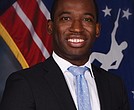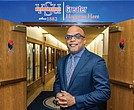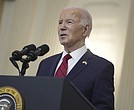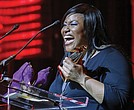RPS offers plan to boost student literacy
Jeremy M. Lazarus | 7/1/2021, 6 p.m.
Nearly half of all Richmond students cannot read proficiently when they enter high school, leading to high dropout rates and a host of other ills, Richmond Public Schools acknowledges.
RPS officials are proposing to go all in to make reading fundamental for every student. The plan of action: Spend a major chunk of the $123 million that will come to RPS from the American Rescue Plan to attack and overcome literacy shortcomings, which are regarded as a key cause of the school-to-prison pipeline and the city’s high rate of poverty.
The plan, which appears to have support from a majority of the nine-member School Board, was released Monday. It was released during another marathon eight-hour board meeting during which the members approved plans for a new approach to science education that pushes projects and hands-on learning. The board also took an initial step toward the goal of replacing George Wythe High School within three years by calling a community meeting to be held 6 to 8 p.m. Tuesday, July 13.
Behind the new literacy action plan is a recognition that “Richmond faces a literacy crisis,” according to Dr. Tracy Epp, RPS’ chief academic officer.
She noted 66 percent of students in kindergarten through second grade fall below minimum thresholds for sound and word recognition on a standard screening test.
Meanwhile, she continued, data show only 56 percent of students in kindergarten through the eighth grade rated proficient on state Standards of Learning reading tests, while only 52 percent of eighth-grade students rated proficient in writing on the state SOL test.
That means 45 to 48 percent of city students leave eighth grade without proficiency in reading and writing.
Dr. Epp noted that the data show the proficiency gap is even greater for students with disabilities and for whom English is a second language, with up to 70 percent of both groups of students rating as not proficient on state SOL reading and writing tests and only 30 percent or so rating proficient.
“We must do whatever it takes,” she stated in the plan, “to ensure that all RPS students receive the fundamental right of literacy” to ensure they can realize their full potential.
The plan calls for splitting the $123 million over three school years, with $58 million to be used to maintain educational investments that initially received funding from last year’s CARES Act.
The remaining $65 million would be poured into the literacy action plan, enabling RPS to hire a “literacy czar” to guide the plan and 20 more reading specialists and staff to offer extended day literacy intervention for students who need extra support.
Principals and teachers also would gain more training and backing to help make literacy “come alive in every classroom,” Dr. Epp stated.
The plan also calls for installing book vending machines in every school and sending the Lit Limo stocked with books every weekend into neighborhoods.
In addition, the proposal would allow RPS to beef up its staff to engage parents and the community in waging an all out campaign to promote literacy and to join with public and nonprofit groups to provide literacy enriched after-school programming.
The effort to gain approval for a special School Board meeting with the community on George Wythe’s replacement occupied a major share of the board’s time.
According to board members Kenya Gibson, 3rd District, and Jonathan Young, 4th District, the purpose of the meeting is to get community feedback to help the board make decisions on the programming to be included in the new building and the size and square footage.
Mr. Young said that based on school enrollment data and projections, RPS does not appear to need a building with a capacity for 2,000 students, but instead could reduce the space to serve 1,500 students. That could eliminate up to 40,000 square feet from the new building, he said, potentially saving between $12 million and $24 million that could go to other school building needs.
Four members of the board who want the city to take the lead on building a new George Wythe and oppose the five-member majority’s decision to take on the project initially opposed the community meeting.
But that changed when Mr. Young said the board should welcome Mayor Levar M. Stoney’s decision to advertise for a design firm for the new George Wythe rather than waiting for the School Board to do so.
Board member Nicole Jones, 9th District, amended a motion made by Ms. Gibson to hold the meeting to include acceptance of the city’s design team, which most of the board approved.
Mr. Young said that the board should accept the winner of the city competition as the board’s design team and provide support.
If the board is to keep the project moving, members also would need to select a prototype to be used in creating the blueprints for the new building, Mr. Young indicated.
Mayor Stoney’s administration already notified the board that if it again takes charge of the project, the new building could not open until January 2025 under its revised timeline.
Mr. Young remains cautiously optimistic that a new school can be opened for the start of the 2024-25 school year if the designs can be completed by July 2022 and released for contractor bids.
RPS already is moving to hire its in-house project management team.
He said an award in November 2022 suggests the building could be ready for use in 18 to 20 months.







